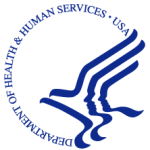- Industry: Government
- Number of terms: 33950
- Number of blossaries: 0
- Company Profile:
United States Department of Health and Human Services, Radiation Emergency Medical Management
A small hollow tube used for injecting or withdrawing liquids. It may be attached to a needle in order to withdraw fluid from the body or inject drugs into the body.
Industry:Health care
An abnormal mass of tissue that results when cells divide more than they should or do not die when they should. Tumors may be benign (not cancer), or malignant (cancer). Also called neoplasm.
Industry:Health care
A condition in which stool becomes hard, dry, and difficult to pass, and bowel movements don’t happen very often. Other symptoms may include painful bowel movements, and feeling bloated, uncomfortable, and sluggish.
Industry:Health care
In medicine, a person who gives blood, cells, tissue, or an organ for use in another person, such as in a blood transfusion or an organ transplant.
Industry:Health care
A blood pressure of 140/90 or higher. Hypertension usually has no symptoms. It can harm the arteries and cause an increase in the risk of stroke, heart attack, kidney failure, and blindness. Also called high blood pressure.
Industry:Health care
An important mineral the body needs to make hemoglobin, a substance in the blood that carries oxygen from the lungs to tissues throughout the body. Iron is also an important part of many other proteins and enzymes needed by the body for normal growth and development. It is found in red meat, fish, poultry, lentils, beans, and foods with iron added, such as cereal.
Industry:Health care
A cell that carries oxygen to all parts of the body. Also called erythrocyte and RBC.
Industry:Health care
